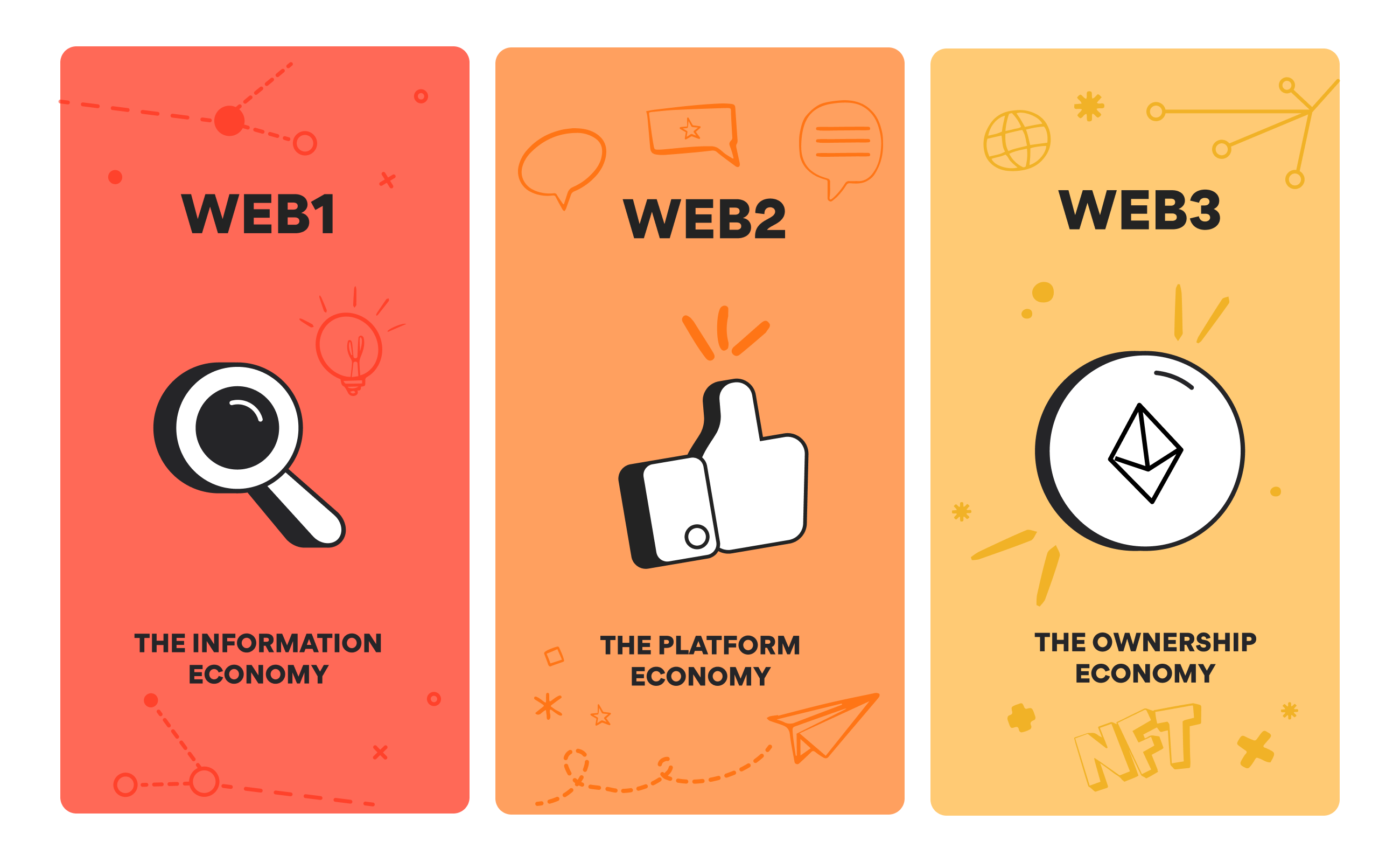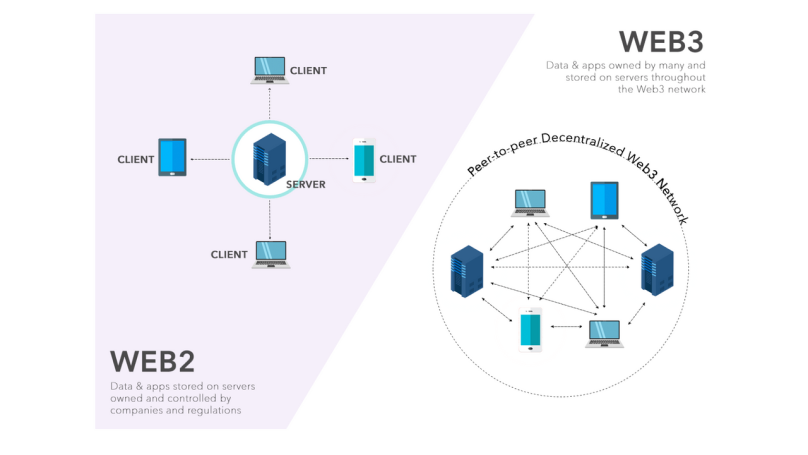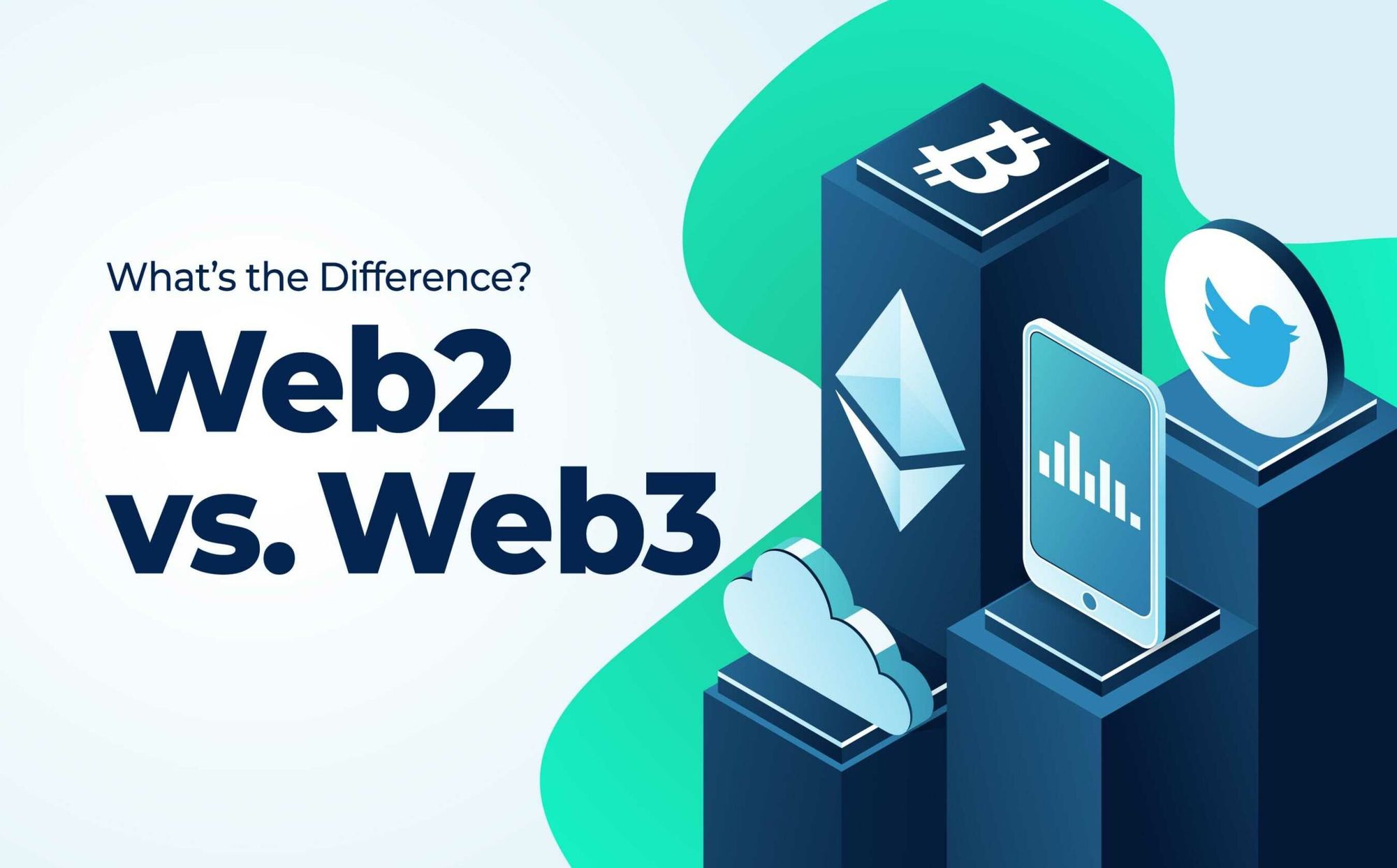From the early days of Web1, which comprised static words and pictures, to the most recent iteration of the World Wide Web, known as Web2, the internet has made great strides forward. At this very moment, a new age known as Web3 is emerging, one that will make it easy to transfer currency and data across decentralised platforms while maintaining full ownership and control.
Besides that, what are some of Web3's other capabilities? Continue reading to gain a deeper understanding of these two ideas, as well as the disparities between them and the potential applications of each. But before we get into it, let's first have a quick review of what the web is.
What Is Web?
The Web also known as World Wide Web (WWW) is an information retrieving system that enables users to access documents and other web resources through the Internet. The WWW abbreviation was one of the first characters people entered into a web browser while searching for any site on the internet.
Tim Berners-Lee, a pioneer in the field of the internet, is generally credited with coining the term "World Wide Web" to describe the worldwide web of information and resources linked together through hypertext connections.

Evolution Of The Web
Web 1
( A stream of static data between 1991 to 2005)
The period from 1991 to 2005 marks the existence of the World Wide Web's first generation. It enables people to search for information and read it. Web1 was primarily made up of static web pages, with only a few content creators contributing. Interactions were very restricted, even though it was a novel concept at that time.
There was less public participation in the early days of the Web when the technology was still in its infancy. Examples of websites that were within this category include LiveJournal, Google, and MySpace. However, the types of content that could be added by users were largely restricted.
Web 2
(A flow of interactions between 2006 to present)
The term "Web 2" refers to a transformation in the way people interact with the internet. Interactivity, social connection, and user-generated content have entirely overtaken Web 1 in the last 15 to 20 years. Web 2 unprecedented reach has led to an explosion of user-generated material, which can now be seen by millions of people across the world practically in a second.
Mobile internet and social networks, as well as sophisticated mobile devices like the iPhone and Android-powered smartphones, have all contributed to Web 2 explosive expansion. To mention just a few of the many applications that benefited from these advancements in the second decade of this millennium, we can point to the supremacy of platforms such as Facebook and Instagram as well as TikTok and Twitter.
Web 3
(The era of interpretation which is fast approaching)
Web 3 is the next generation of the Internet, and it will be smarter, more self-sufficient, and more open than the current version. Technology like Blockchain and Artificial Intelligence will allow computers to understand data in a method that is more human-like, and by making use of technology like Augmented Reality, and VR, consumers can expect more tailored content and experiences.

Features Of The Web 3
In the same way that Web 2 provided a higher level of sophistication in comparison to the static sites of Web 1, Web 3 should likewise represent an improvement in terms of technology. Even while there is not yet a universally accepted definition of Web 3 it does contain a few characteristics that distinguish it:
Decentralization
Individuals will be in charge of their online data on Web 3 thanks to decentralised networks. There would not be a single person or organisation providing support for the network. Everyone who participated in the operation of the blockchain would be liable for its maintenance and eligible for its benefits.
- Anonymity
In today's digital world, the issue of privacy is of paramount importance. Web3 is said to provide a greater degree of anonymity. People would have more control over their data if their personal information was stored in a distributed manner. Those who support this concept feel that it will enable consumers to become less dependent on the services of third-party organisations for data management.
- Self - Serving And No Authorization
The utilization of smart contracts has the potential to turn the internet into a self-serving place. Individuals won't have to rely on the credibility of institutions operating on their behalf from a distance. For example, transactions can be carried out automatically depending on the properties that are encoded within the smart contract.
In addition, the Internet would stop requiring permission to access the content. This indicates that every user can verify transactions on the blockchain, as well as mine for new blocks of cryptocurrency. That means it is not necessary to seek the authorization of a third party for a user to make use of functionalities such as purchasing or selling items on the marketplace.
Greater Connectivity
Increased connection is another benefit that would accrue from the implementation of this vision for the internet of the future. It is anticipated that the use of semantic data will assist in the production of fresh ways of arranging, making use of, and coming across the information. The sum of these factors may result in a noticeable improvement in the quality of the experience provided to users.
- Machine Learning And AI
Natural language processing (NLP) and Semantic Web ideas (Semantic Web) will enable computers to interpret information like humans in Web 3. In addition to this, Web 3 will make use of machine learning, which is a subfield of AI that makes use of data and algorithms to simulate the way people learn, therefore continuously increasing its level of precision. Computers will be able to deliver more accurate and timely results in a variety of fields, such as medication research and the creation of novel materials, thanks to these new capabilities.
What Is The Difference Between Web2 & Web3?
Web 2 and Web 3 have a common ancestry, yet each takes a distinct approach to solving problems. The differences between them are broken down into the categories listed below:
- Currency
Web 2.0 accepts fiat money as a form of payment. Whenever a transaction involves money, it's almost always government-issued, like the US dollar. Web3, on the other hand, makes use of digitally encrypted currencies like Ethereum and Bitcoin to fund transactions.
- Content Ownership
Web 2 places information storage under the authority of the network, which raises questions about users' anonymity as well as worries about the safety of their online data. Web 3 offers a solution to this issue by enabling the simultaneous flow of data in several different locations.
- Speed
Web 2 searches for information that is stored in a single, consistent location, most often on a single server, and it does it by using HTTP in distinct web addresses. On the other hand, ownership of Web 3 is shared among a large number of other people.
- Technology
CSS3, JavaScript, AJAX, and HTML5 are some of the most prevalent technologies used in Web 2. Machine learning, deep web, semantic web, and decentralised technologies are the driving forces behind Web 3.
- Application
RSS feeds, videos, Podcasts, social bookmarking, and blog sites are all components of Web2 technology. 3D portals, virtual worlds, and decentralised applications (dApps) driven by artificial intelligence and machine learning are all included in Web3.

Summary
Web3 is still in its infancy, it may be hard to accurately anticipate how it will ultimately develop. The 2010s were the decade that marked the rise of Web 2.0. The 2020s may be the decade that sees Web 3.0 assume its proper place as the dominant force in the global economy and culture. Experiences that are completely immersive within the metaverse would be what Web 3.0 has in store for us.
Web 3.0 is built on the utilisation of blockchains in addition to a wide variety of other decentralised technologies, such as external data oracles, storage, digital identities, and communications. In Web3, values will be represented by tokens that have been validated using cryptographic processes.
People should prepare themselves for a major transformation in the manner in which we interact and collaborate online over the next ten years. This is going to be an era that is rich in opportunities and a moment that is going to be very intriguing.
Web3 May Have Some Difficulties In The Future
Concern has been expressed over the decentralised nature of Web 3, which naturally results in a lack of supervision and control in terms of both safety and compliance with the law. With decentralisation comes legal and regulatory issues.
Decentralization will make it much more difficult to combat cyberattacks, offensive language, and disinformation because of the absence of central supervision. If the internet is distributed, it will be far more difficult to regulate and enforce existing laws.


Join the conversation.